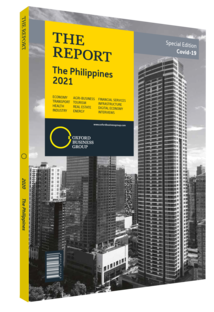Christopher Po, Executive Chairman, Century Pacific Food: Interview

Interview: Christopher Po
Which vulnerabilities in local food supply chains were highlighted by the Covid-19 pandemic?
CHRISTOPHER PO: The main challenges were fear, disruption to the flow of goods and capital, and the lack of public transport. Moving goods across regions was also difficult, and coordination with various local government units proved challenging due to differences in their interpretation of Covid-19-related rules. Despite this, supply chains remained intact. The government was effective in identifying essential industries and export-oriented companies that needed to continue operating. Factories also reassessed their own operations and evaluated the challenges that smaller suppliers encountered, enabling coordination throughout the whole supply chain. In addition, the manufacturing industry was able to come up with solutions to the shutdown of public transport in order to maintain a sufficient labour force. At their lowest level factories still successfully operated at around 60-70% capacity, while taking measures to stem the spread of the virus. Capital also continued to flow – at least for large manufacturers. In sum, the Philippines experienced the inefficiencies and challenges common to other developing countries but, in the end, our local supply chains proved resilient.
To what extent is the pandemic likely to lead to a lasting shift towards food self-sufficiency?
PO: Before the pandemic the just-in-time model was the governing concept worldwide. This reduced costs and maximised supply chain efficiency by keeping inventory levels as low as possible. Key performance indicators prioritised efficiency over resilience. There is now a discussion over whether the alternative justin-case model would be more appropriate. While diversifying the supply chain would help avoid factory operations from being disrupted, companies still need to generate cash flow quickly. Stock-keeping operations may also slow down under a just-in-case model, as a broader range of products leads to a more complex, less efficient system. Nonetheless, the Philippines remains a net beneficiary of globalisation, and we should not reverse this process. As a food importer, the Philippines should focus on establishing stronger relationships with its trade partners to ensure it is prioritised in times of crisis. This is also a question of self-sufficiency versus cost. Higher inflation would be the cost to pay for food self-sufficiency.
In what ways did product demand and consumer behaviour evolve during the pandemic, and what kind of retail outlets are growing in popularity?
PO: As a result of social-distancing measures, people began to cook more at home and give more consideration to the food they eat and how they source it. Quality became more important and the global demand for well-known brands increased, leading to a rise in sales and greater market share. Some consumer habits related to safety and hygiene also changed, which could remain after the pandemic subsides. Given the economic crisis, value for money will also be key.
From a sales perspective, the penetration of e-commerce has risen as retailers identify new channels for the sale and distribution of their products. Local e-commerce players saw growth in sales volumes of 200-400% between the start of the pandemic and September 2020. There was also an uptick in community selling, whereby Filipinos trade simple products as an additional means of livelihood. Big-box modern retailers recorded growth as well. These stores enabled social distancing, as they allowed consumers to leave home less frequently and fulfil several needs at once.
However, not all kinds of retail outlets have been growing. Many sari-sari stores – small, informal retailers – and wet markets lack the necessary sanitised facilities. Their supply chains were also disrupted when priority was given to key accounts, relegating smaller retailers. As a result, approximately 25% of micro-businesses had to close during the lockdown period.
You have reached the limit of premium articles you can view for free.
Choose from the options below to purchase print or digital editions of our Reports. You can also purchase a website subscription giving you unlimited access to all of our Reports online for 12 months.
If you have already purchased this Report or have a website subscription, please login to continue.

